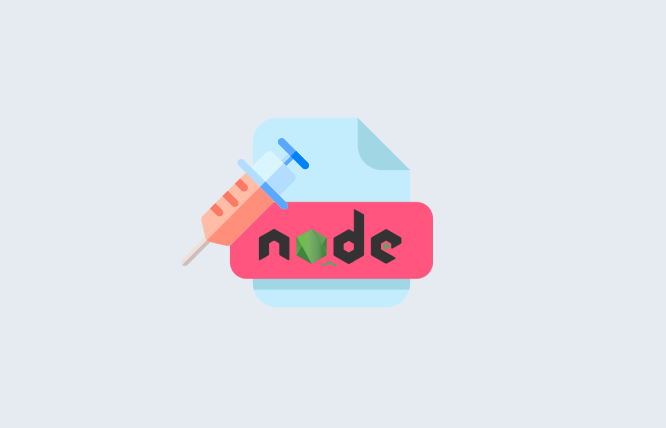We will explore different software development team structures, find out about traditional vs. Agile teams, and equip you to select the ideal fit for your project, streamlining your software development life cycle (SDLC)!
There’s a persistent misconception: a single, ideal software development team structure exists for every project. Let’s clear it up: you will require different teams for different types of project needs.
This “one-size-fits-all” approach simply isn’t realistic. The optimal structure hinges on a multitude of factors that impact the entire software development life cycle (SDLC).
When trying to figure out what makes a good team, factors like project complexity, technique (Agile vs. Waterfall), and corporate culture should be your major considerations.
The impact of a well-defined software development team structure is undeniable. It fosters efficient collaboration, streamlines project execution, and ultimately drives project success. Conversely, a poorly chosen structure can lead to communication roadblocks, inefficient workflows, and, ultimately, project delays and budget overruns.

Different Types of Software Development Team Structures
Having a clear understanding of the various team structures available empowers you to make an informed decision for your specific project needs. Here’s a breakdown of the three most common approaches:
Generalist Teams (Jacks of All Trades)
Generalist teams, often referred to as “full-stack” teams, comprise individuals with a broad skillset encompassing various aspects of the SDLC. They can handle front-end development, back-end development, and even basic testing.
- Advantages: Generalist teams excel in smaller, well-defined projects. Their versatility allows for quick iteration and decision-making, fostering a dynamic development environment.
- Disadvantages: While adaptable, generalist teams might lack the in-depth expertise required for highly complex projects. Specific technical challenges could require additional resources or external hires.
Specialist Teams (Specialists)
Specialist teams bring together individuals with deep expertise in specific areas. This structure often includes dedicated front-end developers, back-end developers, UI/UX designers, and QA testers.
- Advantages: Specialist teams shine in large-scale, intricate projects demanding a high level of technical proficiency. Each team member contributes their specialised knowledge, leading to superior code quality and a robust final product.
- Disadvantages: Communication silos can arise between specialists if not actively managed. Additionally, specialist teams might struggle with rapid iteration, a key component of Agile methodologies.
Hybrid Teams (All-Rounders)
Hybrid teams, as the name suggests, blend the strengths of both generalist and specialist structures. They typically consist of individuals with a strong core skillset complemented by additional expertise in specific areas. For example, when considering a hybrid team for your project, you might hire Android developers for an Android application project and iOS developers for an iPhone application.
- Advantages: Hybrid teams offer the best of both worlds. They can adapt to changing project requirements while still possessing the necessary expertise to tackle complex technical challenges. This structure is well-suited for medium-sized projects and Agile development methodologies.
- Disadvantages: Finding the right individuals with the perfect blend of skills can be a challenge, requiring careful recruitment and training processes.
Matching Structure to Your Project Needs
Choosing the optimal software development team structure isn’t a one-size-fits-all proposition. For example, if you’re looking to develop a cross-platform mobile app, the team structure might differ compared to hybrid application development. The ideal team for your project hinges on several key factors:
Project Size and Complexity
Smaller, well-defined projects often thrive with generalist teams. These versatile individuals possess a broad skillset encompassing various aspects of the software development life cycle (SDLC), enabling swift iteration and decision-making. However, for intricate, large-scale projects, specialist teams excel. Comprised of individuals with deep expertise in specific areas like front-end development, back-end development, and testing, they deliver high-quality code and a robust final product.
Development Methodology (Agile vs. Waterfall)
The chosen development methodology also plays a crucial role. Agile methodologies, known for rapid iteration and adaptability, often favour hybrid teams. These teams blend the strengths of generalists and specialists, allowing them to adapt to changing project requirements while still possessing the necessary expertise for complex tasks. Conversely, Waterfall methodologies, with their pre-defined stages, might benefit more from specialist teams to ensure consistent quality throughout the SDLC.
Company Culture and Communication Style
A company’s culture and communication style significantly impact team dynamics. Open communication cultures foster collaboration and might find success with generalist or hybrid teams. Conversely, siloed communication cultures might require specialist teams with clear communication bridges established to ensure seamless collaboration.
By carefully considering these factors, you can move closer to selecting the ideal team structure for your project’s specific needs.
Remote vs. Co-located Development Teams
The debate between remote and co-located development teams is a common one. Both approaches offer distinct advantages and disadvantages:
Remote Development Teams
- Pros: Wider talent pool, potentially lower costs, increased flexibility for team members.
- Cons: Potential communication challenges, fostering team spirit can be more difficult, and time zone differences might require adjustments.
Co-located Development Teams
- Pros: Stronger team spirit and collaboration, easier communication and problem-solving, fosters a more cohesive work environment.
- Cons: Limited talent pool (geographically dependent), potentially higher office costs, less flexibility for team members.
The best approach depends on your company’s culture, project needs, and budget. Some considerations include:
- Project complexity: Complex projects might benefit from the closer collaboration fostered by a co-located team.
- Communication needs: If frequent communication is crucial, a co-located team might be preferable.
- Team member preferences: If flexibility is a priority for your team, a remote structure might be more attractive.
Ultimately, a successful team, regardless of location, requires strong communication strategies, clear expectations, and well-defined processes.
Core Software Development Team Members
The foundation of any successful software development team rests on a core set of individuals, each playing a vital role in the software development life cycle (SDLC). Here’s a breakdown of these essential team members:
Product Owner
The advocate for the product vision, the Product Owner transforms business requirements into functional features. They make sure the development team focuses on the most impactful functionalities by giving priority to the backlog.
Project Manager
As the project’s leader, the Project Manager is responsible for planning, allocating resources, keeping track of progress, and making sure the project stays on schedule.
Software Developers (Front-End & Back-End)
The software developers and code architects make the product vision a reality. Front-End Developers design the visual components users interact with, while Back-End Developers create the server-side engine that runs the application.
QA Testers
The quality guardians and QA Testers meticulously test the software to identify and eliminate bugs. Their rigorous testing ensures a high-quality, stable final product.
Additional Team Members (Depending on Needs)
While the core team provides a solid foundation, depending on the project’s complexity and specific needs, additional team members can be crucial for success. Here are some specialists you might consider:
UI/UX Designer
The user experience architects focus on creating an intuitive and aesthetically pleasing user interface (UI) and a seamless user experience (UX).
DevOps Engineer
Their role is to bridge streamline development and operations, DevOps Engineers deploy and maintain the software, ensuring a smooth transition from development to production.
Business Analyst
The communication bridge, the Business Analyst acts as a liaison between business stakeholders and the development team. They translate business requirements into technical specifications that developers can understand and implement.
Solution Architect
The system visionary, the Solution Architect designs the overall architecture of the software, ensuring scalability, performance, and long-term maintainability.
Data Scientist/Analyst (if data-driven)
In data-driven projects, Data Scientists or Analysts leverage data to inform product decisions, personalise the user experience, and identify areas for improvement.
Security Engineer
For security-critical applications, a Security Engineer safeguards the software against vulnerabilities and cyber threats.
Traditional Software Development Team vs. Agile Team: A Tale of Two Approaches
The software development team structure revolves around two primary methodologies: traditional and Agile. These distinct approaches not only impact the development process itself but also influence the way development teams are structured. Let’s delve into the key differences between traditional and Agile teams:
Traditional Teams
- Structure: Often siloed, with dedicated teams for requirements gathering, design, development, testing, and deployment.
- Communication: Waterfall-style communication, with information flowing downwards from project managers to developers.
- Adaptability: Limited flexibility. Changes to requirements can be disruptive and costly.
- Focus: Emphasis on upfront planning and detailed specifications.
Agile Teams
- Structure: Cross-functional teams with a blend of skills needed to deliver working software iteratively.
- Communication: Constant and collaborative. Daily stand-up meetings and open communication channels are key.
- Adaptability: Highly adaptable. Changes to requirements are embraced and incorporated throughout the development process.
- Focus: Emphasis on delivering working software in short sprints, with continuous feedback and improvement.
Conclusion
There’s no one-size-fits-all software development team structure. The ideal approach adapts to your project’s specific needs. Consider generalist, specialist, or hybrid teams based on project size, complexity, development style, and company culture.
Building a high-performing team goes beyond roles. Foster collaboration, clear communication, and a supportive environment where everyone feels valued. Core members like Product Owner, Project Manager, Developers, and Testers are essential. Specialists like UI/UX Designers and DevOps Engineers can be crucial depending on your project.
By understanding the interplay between project needs and team composition, you can create a dream team capable of delivering exceptional results. Embrace flexibility – the software development landscape is constantly evolving, and so should your team structure.
Frequently Asked Questions
Different projects have varying needs, impacting the ideal team structure. Consider factors like project complexity, development methodology, and corporate culture to determine the best fit.
Generalist teams offer versatility for smaller projects, while specialist teams excel in complex tasks. Hybrid teams blend both approaches, offering adaptability and expertise for medium-sized projects.
Traditional teams follow a siloed approach with upfront planning, while Agile teams emphasise collaboration and adaptability, delivering working software iteratively. You can choose the approach that aligns with your project goals and values.
Have questions or feedback?
Get in touch with us and we‘l get back to you and help as soon as we can!





